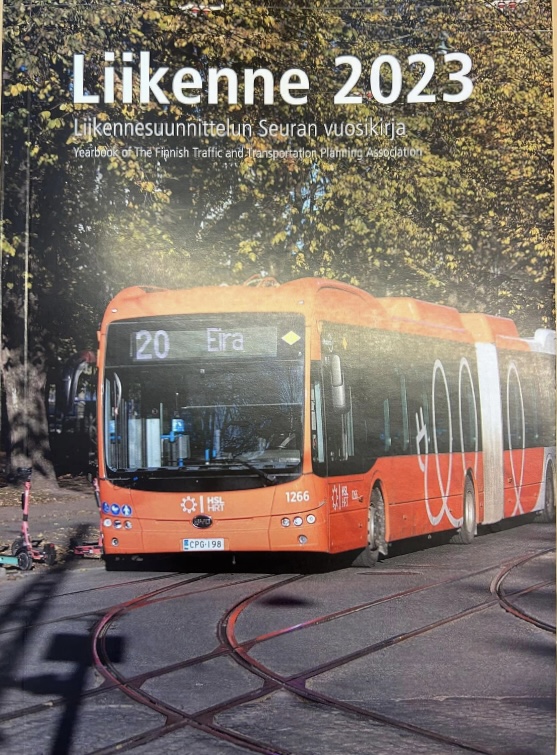Relationships Between Weather and Cycling
DOI:
https://doi.org/10.58956/liikenne.142999Avainsanat:
.Abstrakti
As cycling gains more traction and attention as a beneficial mode of urban transportation, different factors have emerged in different regions of the world to influence its adoption and promotion. One of the most wide-spread and colloquial of these factors is that of the weather or climate of the region, and how it may facilitate or, more often, dissuade cycling practices. Although it may appear intuitive that “poor” weather shall negatively impact the amount of cycling that occurs in a region, the reliability of this intuition is challenged by example locations where cycling in “poor” winter conditions is the norm rather than the exception, or where cyclists are relatively indifferent towards rainy weather. As such, the aim of this literature review is to identify the real effects of weather on cycling behaviour in different locations and uncover relationships between secondary covariates and responses to weather. Rainfall, temperature, and wind are identified as the three most important measurable weather parameters that affect cycling behaviour. In most locations, cycling rates drop significantly when it starts to rain, temperature thresholds vary between locations, and the effect of wind is only significant when above 5 Beaufort. Several studies also reveal factors that interact with measurable weather parameters to influence behaviour in significant and seemingly complex ways. These include the trip purpose, traveller sociodemographic, the characteristics of the built environment, and perceptions of normality. The identification of these covariates and a discussion about interrelations amongst them contributes to an explanation of why weather seems to affect cyclists in some places more than in others, while also highlighting directions for future research.
Lähdeviitteet
Ahmed, F., Rose, G. & Jakob, C. (2013). Commuter Cyclist Travel Behavior: Examination of the Impact of Changes in Weather. Transportation Research Record: Journal of the Transportation Research Board. Vol. 2387, pp. 76-82. DOI: 10.3141/2387-09
Amiri, M. & Sadeghpour, F. (2015). Cycling characteristics in cities with cold weather. Sustainable Cities and Society, vol 14, pp 397-403. DOI: https://doi.org/10.1016/j.scs.2013.11.009
Bean, R., Pojani, D. & Corcoran, J. (2021). How does weather affect bikeshare use? A comparative analysis of forty cities across climate zones. Journal of Transport Geography, vol 95, pp 103155. DOI: https://doi org.libproxy.aalto.fi/10.1016/j.jtrangeo.2021.103155
Böcker, L., Dijst, M., & Prillwitz, J. (2013). Impact of Everyday Weather on Individual Daily Travel Behaviours in Perspective: A Literature Review. Transport Reviews, 33(1), 71–91. DOI: https://doi.org/10.1080/01441647.2012.747114
Helbich, M., Böcker, L. & Dijst, M. (2014). Geographic heterogeneity in cycling under various weather conditions: evidence from Greater Rotterdam. Journal of Transport Geography, vol 38, pp 38-47. DOI: https://doi.org/10.1016/j.jtrangeo.2014.05.009
Hong, J., McArthur, D. P. & Stewart, J. L. (2020). Can providing safe cycling infrastructure encourage people to cycle more when it rains? The use of crowdsourced cycling data (Strava). Transport Research Part A: Policy and Practice, vol 133, pp 109-121. DOI: https://doi.org/10.1016/j.tra.2020.01.008
Hudde, A. (2023). It's the mobility culture, stupid! Winter conditions strongly reduce bicycle usage in German cities, but not in Dutch ones. Journal of Transport Geography. Vol 106, pp 103503. DOI: https://doi.org/10.1016/j.jtrangeo.2022.103503
Lee, Q. Y. & Pojani, D. (2019). Making cycling irresistible in tropical climates? Views from Singapore. Policy Design and Practice, vol 2(4), pp 359-369. DOI: https://doi org.libproxy.aalto.fi/10.1080/25741292.2019.1665857
Liu, C., Yusak, S. & Karlström, A. (2017). Weather variability and travel behaviour – what we know and what we do not know. Transport Reviews, vol 37(6), pp 715-741. DOI: https://doi.org/10.1080/01441647.2017.1293188
Liu, C., Susilo, Y. O. & Termida, N. A. (2020). Weather perception and its impact on out-of home leisure activity participation decisions. Transportmetrica B: Transport Dynamics, vol 8(1), pp 219-236. DOI: https://doi.org/10.1080/21680566.2020.1733703
Meng, M., Zhang, J., Wong, Y. D. & Au, P. H. (2016). Effect of weather conditions and weather forecast on cycling travel behavior in Singapore. International Journal of Sustainable Transportation, vol 10(9), pp 773-780. DOI: https://doi.org/10.1080/15568318.2016.1149646
Motoaki & Daziano. (2015). A hybrid-choice latent-class model for the analysis of the effects of weather on cycling demand. Transportation Research Part A: Policy and Practice. vol 75, pp 217-230. DOI: https://doi-org.libproxy.aalto.fi/10.1016/j.tra.2015.03.017
Saneinejad, S., Roorda, M. J. & Kennedy, C. (2012). Modelling the impact of weather conditions on active transportation travel behaviour. Tranportation Research Part D: Transport and Environment, vol 17(2), pp 129-137. DOI:
Tiedostolataukset
Julkaistu
Numero
Osasto
Lisenssi
Copyright (c) 2024 Christopher Kane, Stefanos Kythreotis

Tämä työ on lisensoitu Creative Commons Nimeä-EiKaupallinen-EiMuutoksia 4.0 Kansainvälinen Julkinen -lisenssillä.



